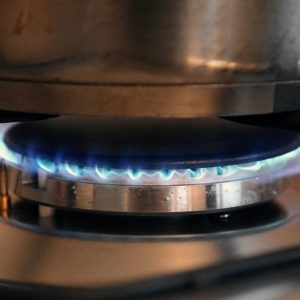The dangers of carbon monoxide have been flagged up in news reports for years.
Just last month, The Guardian reported that carbon monoxide poisoning was the likely cause of death of two people – and hospitalised five others – at a property in north London.
We take a look at the warning signs of leaking gas in the home, some top tips from our care team, and also share how one quick-thinking carer managed to save a customer from a serious leak.
Why carbon monoxide is ‘the silent killer’?
The term ‘silent killer’ is often used when talking about carbon monoxide because it’s an odourless yet incredibly toxic gas. Faulty gas appliances and paraffin heaters can lead to a greater risk of harmful carbon monoxide being released into the home.

In the case in north London, a faulty boiler was found to be the culprit, but it can also be the result of central heating systems, heaters, cookers, fireplaces and wood-burning stoves.
And because the gas cannot be seen, tasted, or even smelt, the best defence you have against carbon monoxide is prevention.
Carbon Monoxide warning signs to look out for
Though carbon monoxide itself is the master of disguise, it does give a number of warning signs that it is present. It’s important to not only recognise these but to also understand how to act if you suspect carbon monoxide to be leaking in your home.
These symptoms are major carbon monoxide red flags:
- Headaches
- Nausea or dizziness
- Breathlessness
- Vomiting
- Stomach pains
- Drowsiness
- Suddenly collapsing or losing consciousness
If you start to notice any of these signs, it’s important that you act quickly and seek medical attention if you start feeling unwell.
What to do if you suspect carbon monoxide
The first step you must take is evacuate your home and open all the windows. After leaving your home, keep as calm as possible, ring the gas company and the emergency services.
As carbon monoxide can be caused by gas and appliances, switch these off immediately and either call the gas company or emergency services. Get out of the house and open all the windows to ventilate the area.
A near miss that prompted action
Louise, one of our live-in carers, shares a flat with her customer which uses gas heating. In September last year, her customer began feeling ill and was in and out of hospital with feelings of lethargy and not taking in fluids or foods.
An email from us about the symptoms of carbon monoxide poisoning flagged the warning signs to Louise that something wasn’t quite right and encouraged her to seek medical advice.
After joining the dots, Louise raised the alarm to British Gas. It was later found that a boiler with piping fitted incorrectly was to blame.
Fortunately, thanks to swift action, both Louise and her customer are feeling much better. A carbon monoxide detector has also been installed which is tested regularly and the boiler has also been repaired.
Steps to prevent carbon monoxide build-up in your home
Installing a carbon monoxide detector in the home is the simplest way to be alerted if the gas starts to build up in your home, so ensure that these are in place and tested on a regular basis.
Some detectors have a digital display which shows how much carbon monoxide is in your home. Any figure higher than 70 parts per million could lead to noticeable and severe effects if exposed to it for a long period of time.
And if you have an elderly relative or neighbour, make sure that they understand the dangers of using gas appliances in winter and that they have a fully-working detector. Local fire stations and services often install alarms – both for carbon monoxide and smoke – and replace the batteries for vulnerable adults for free. Contact them to see if they can help.
Staying vigilant at all times, but especially during the winter months, is another way to keep you and or a loved one safe. An unusually high amount of smoke from an open fire is a significant indicator that carbon monoxide is present and if you use a gas hob, the flame should always be blue and not yellow or orange.
As well as carbon monoxide detectors, ensure that all fire alarms are working and tested, as well as servicing boilers each year by a qualified technician. A blocked chimney can also cause carbon monoxide, so make sure these are cleaned every year.
Small actions and steps such as these are the most effective at preventing a carbon monoxide build-up and can put your family’s safety first. But if you’re worried about the effects of carbon monoxide, speak to your local authorities.
